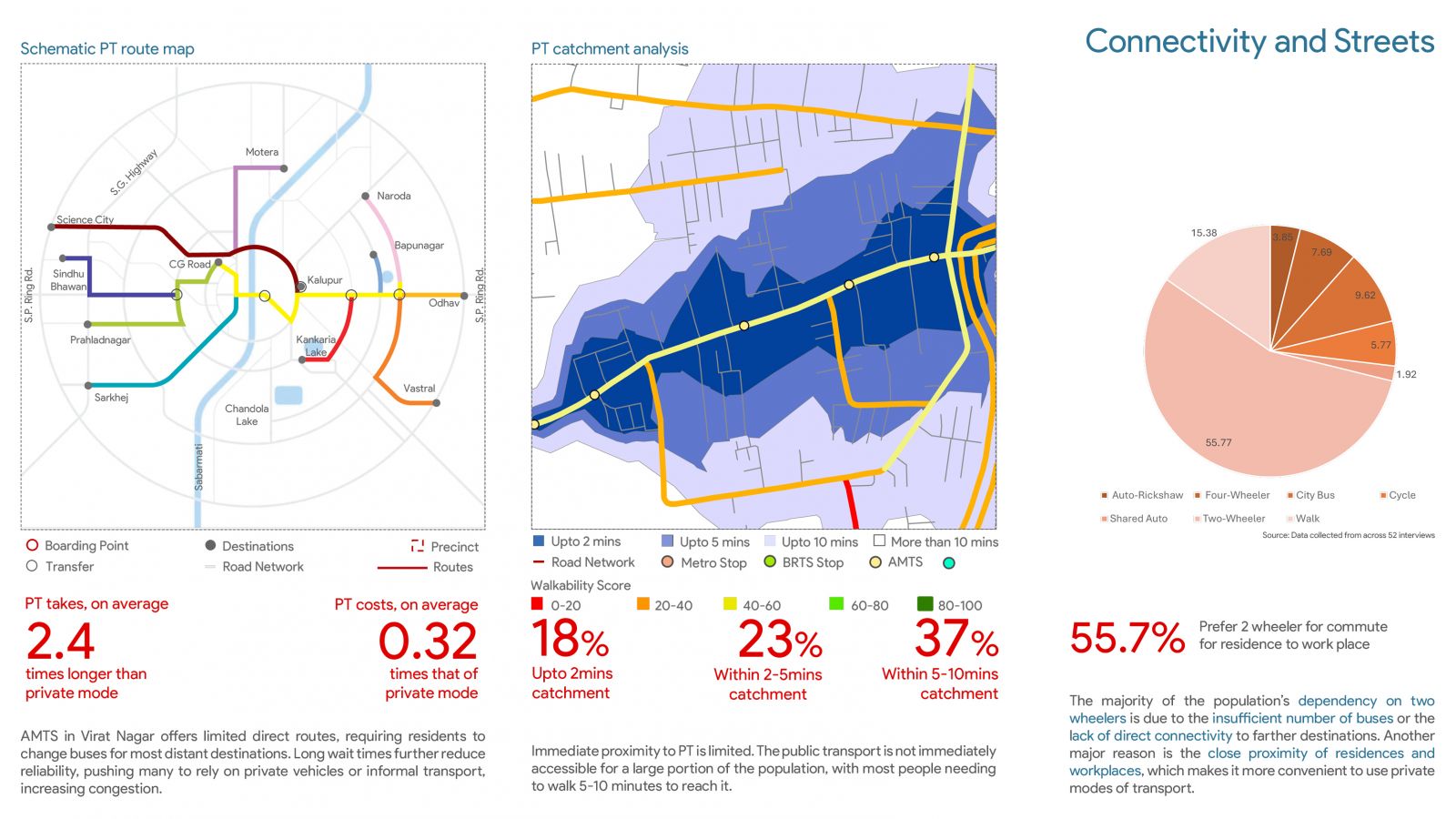Your browser is out-of-date!
For a richer surfing experience on our website, please update your browser. Update my browser now!
For a richer surfing experience on our website, please update your browser. Update my browser now!
This study explores Nikol as a self-sustaining neighborhood that thrives on its diverse housing typologies, vibrant commercial edges, and proximity to essential services like education, healthcare, and places of worship. The sub-arterial road plays a pivotal role in connecting the area, fostering economic activities, and supporting community interactions. However, challenges such as spillovers onto roads, limited walkability, and inadequate public transport connectivity impact its efficiency. Despite these issues, Nikol remains a preferred choice for residents across socio-economic backgrounds due to its balanced integration of residential, commercial, and industrial spaces, making it a dynamic and inclusive urban environment.









